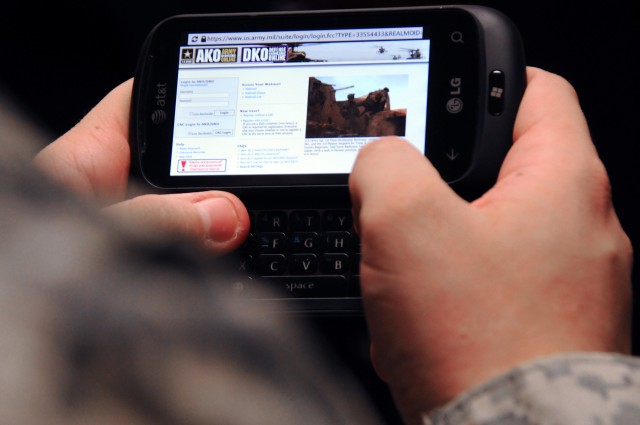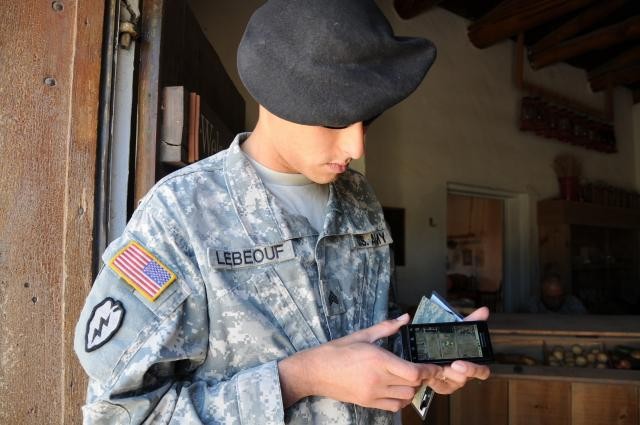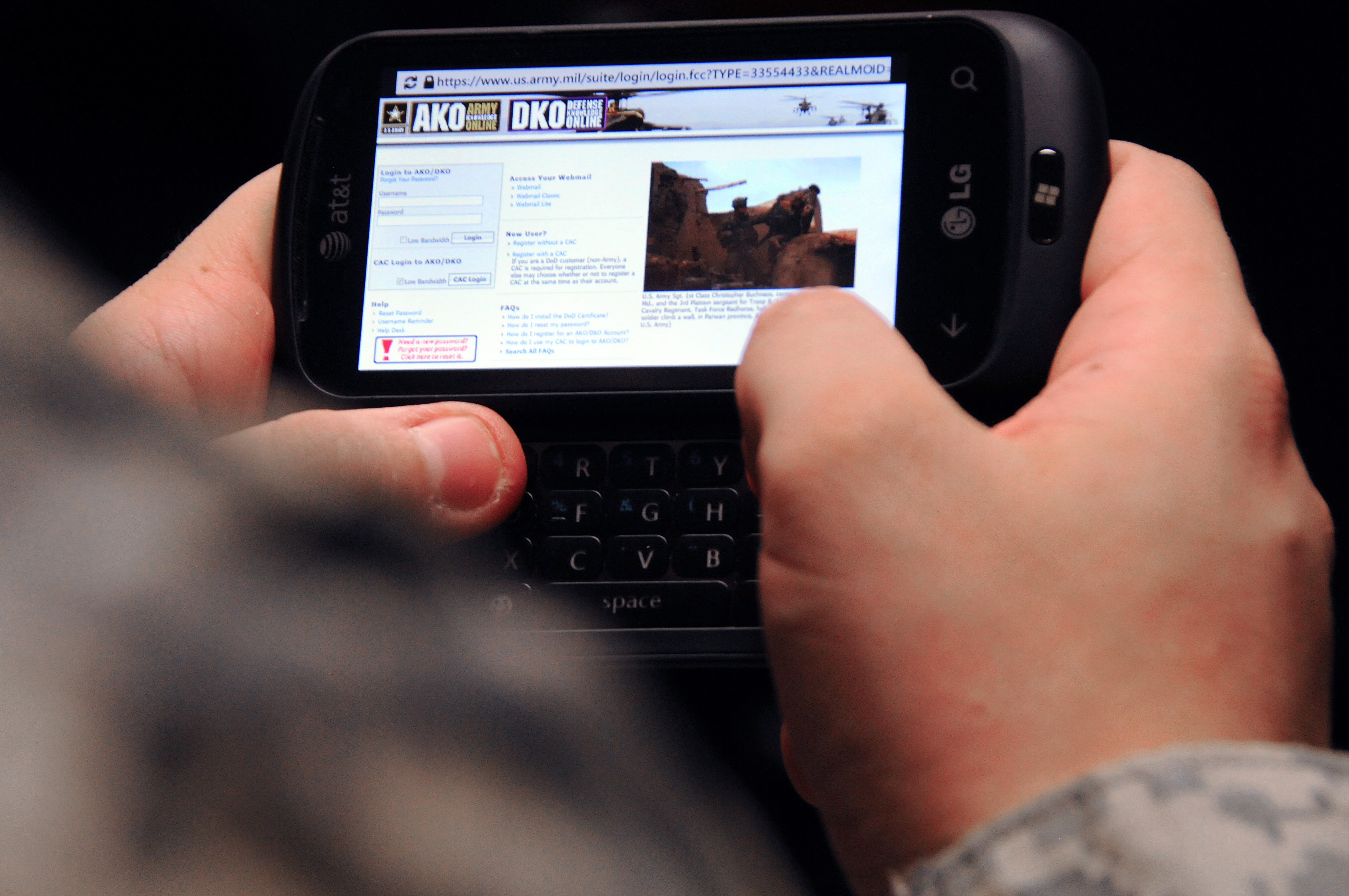In the past few weeks and months, numerous points and counterpoints have been made regarding Connecting Soldiers to Digital Applications (CSDA). Many of these points are valid; many are not. I would like to take a few minutes to address some of the concerns and clarify misperceptions regarding this Army initiative.
Presently, the mechanism for providing smartphone capability to all Soldiers is still being explored. We are currently working to identify a strategy and business model which would allow the Army to conduct a firm cost benefit analysis for providing each Soldier with a smartphone. However, this decision has not been made since we are still at the concept exploration stage. The bulk of CSDA resides in eight pilot programs being tested and evaluated simultaneously by Army Evaluation Task Force (AETF) Soldiers and students at Army training centers and schools. When implemented, CSDA will fundamentally change how Soldiers access information, data, and training content in both garrison and operational environments.
There is no denying that the world as a whole and our Army in particular are in the midst of a technology firestorm. The explosion of smartphones in the civilian sector highlights the potential of these smartphones and digital applications for the Army. If we do not embrace these evolving technologies, we will be behind the rest of the world. The potential returns from these technologies are simply too great to ignore, particularly for enhancing training and tactical functions.
The Army Capabilities Integration Center (ARCIC) and the Army's Chief Information Officer initiated CSDA to explore the value for the individual Soldier. CSDA is not a materiel acquisition program, but a series of pilots and assessments that will evaluate the merit of smartphones and cellular connectivity to support the new training approaches of the Army Learning Concept 2015 and the creation of a persistent learning environment. These assessments will also explore smartphone potential for accessing operational and institutional information. The benefit of employing commercially available devices is that it may permit the Army to rapidly update and share information at a fraction of the cost of developing military unique solutions via traditional methods.
CSDA seeks to exploit the digital generation's comfort with commercial-off-the-shelf media technology. This generation will lead the Army in the future using technologies in new ways. Smartphones and other mobile devices allow the Army to supplement, extend, and partially transfer the training content out of the classroom and into the Soldier's hand. From an initial training pilot program, we found that students achieved improved learning proficiency. Metrics, data collection and assessment of ongoing pilots will help determine if Soldiers learning from hand-held technologies are able to pick up course materials much faster and have greater retention when dealing with basic tasks. We will also determine the extent to which the delivery of training content in this method may reduce the amount of time spent in class listening to lectures and prepare Soldiers to engage in collaboration, problem solving and practical exercises when they are in a classroom environment.
Initial findings and tactical feedback from Soldiers with combat experience assigned to the Army Evaluation Task Force (AETF) already show great promise as exemplified by these comments: "Greatly improved my situational awareness. We could see what was going on in real time." "The smart phone provided communication to the lowest levels. It helped us to see the positions of our battle buddies through a live tracker, better than anything we already have." Additional feedback gave high marks to Blue Force location applications, increased battlefield visualization, and the ability to take pictures of the enemy, their weapons, and materials and send this information to the company Tactical Operations Center. Other battlefield applications under review that have great potential include: Threat Act Program that enables Soldiers to continuously search and update data sources for enemy activity in their area; Soldier Eyes that uses phone sensors for situational awareness on location and is tied to data sources that provide location, directions, and distances to enable appropriate movement; Media Share that allows Soldiers to submit photos or video helpful in the collection and analysis of intelligence; and an ISR feed providing day or night live video from a vehicle mounted camera.
We are only scratching the surface. The Army plans to continue to exercise, evaluate, and search for more tactical applications that will connect the Soldier to the Army's tactical network while protecting data accessed by smartphones.
Related Links:
Feb. 28, 2011: Army News Service - Smartphones for all 'makes sense in long run'
July 15, 2010: Stand-To! Connecting Soldiers to Digital Applications
Feb. 16, 2011: Stand-To! Brigade Modernization Command
Dec. 8, 2010: Video - Connecting Soldiers to Digital Applications Phase 2






Social Sharing